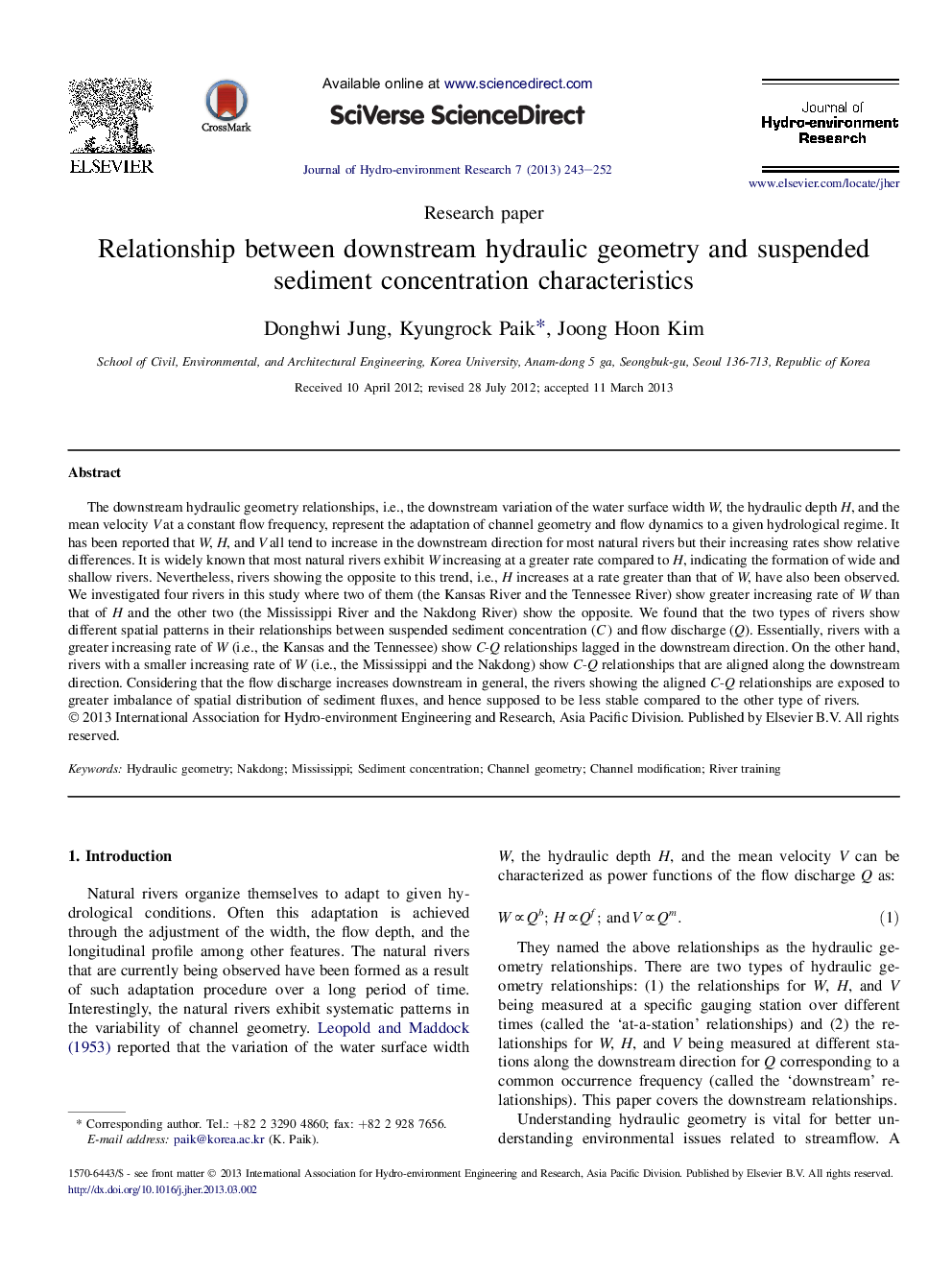| Article ID | Journal | Published Year | Pages | File Type |
|---|---|---|---|---|
| 4493845 | Journal of Hydro-environment Research | 2013 | 10 Pages |
•Downstream increase of stream width is related to sediment concentration variability.•Downstream hydraulic geometry relationship is an indicator of channel stability.•Hydraulic geometry of the Nakdong River is presented and compared with US rivers.
The downstream hydraulic geometry relationships, i.e., the downstream variation of the water surface width W, the hydraulic depth H, and the mean velocity V at a constant flow frequency, represent the adaptation of channel geometry and flow dynamics to a given hydrological regime. It has been reported that W, H, and V all tend to increase in the downstream direction for most natural rivers but their increasing rates show relative differences. It is widely known that most natural rivers exhibit W increasing at a greater rate compared to H, indicating the formation of wide and shallow rivers. Nevertheless, rivers showing the opposite to this trend, i.e., H increases at a rate greater than that of W, have also been observed. We investigated four rivers in this study where two of them (the Kansas River and the Tennessee River) show greater increasing rate of W than that of H and the other two (the Mississippi River and the Nakdong River) show the opposite. We found that the two types of rivers show different spatial patterns in their relationships between suspended sediment concentration (C) and flow discharge (Q). Essentially, rivers with a greater increasing rate of W (i.e., the Kansas and the Tennessee) show C-Q relationships lagged in the downstream direction. On the other hand, rivers with a smaller increasing rate of W (i.e., the Mississippi and the Nakdong) show C-Q relationships that are aligned along the downstream direction. Considering that the flow discharge increases downstream in general, the rivers showing the aligned C-Q relationships are exposed to greater imbalance of spatial distribution of sediment fluxes, and hence supposed to be less stable compared to the other type of rivers.
